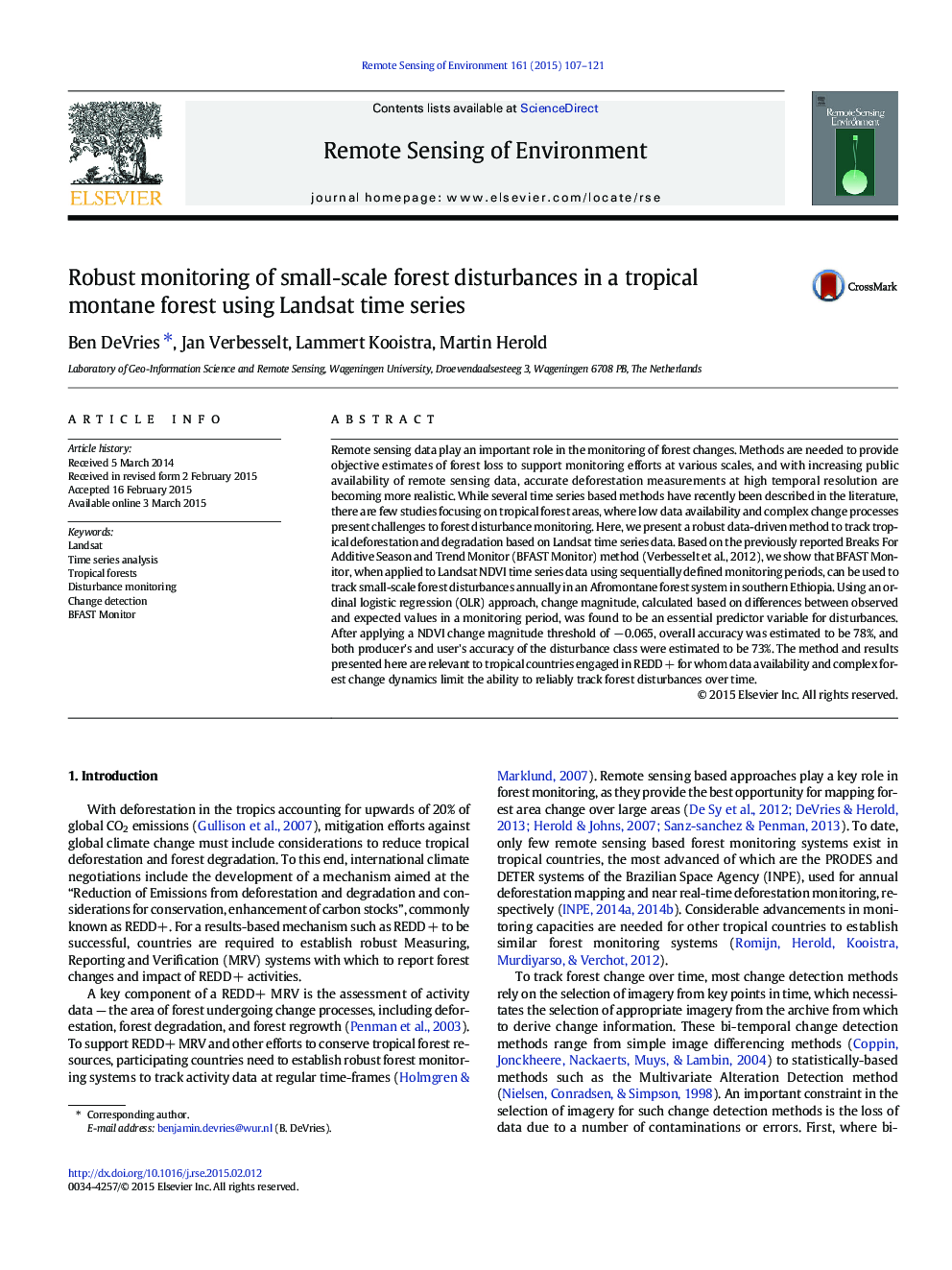| کد مقاله | کد نشریه | سال انتشار | مقاله انگلیسی | نسخه تمام متن |
|---|---|---|---|---|
| 6346156 | 1621239 | 2015 | 15 صفحه PDF | دانلود رایگان |
- Robust data-driven method to track complex forest change processes
- Small-scale forest disturbances detected using NDVI time series
- Demonstration of BFAST Monitor algorithm on irregular time series data
- First forest change study in Ethiopian montane forests at high temporal resolution
- Potential of detecting degradation using change magnitude is shown.
Remote sensing data play an important role in the monitoring of forest changes. Methods are needed to provide objective estimates of forest loss to support monitoring efforts at various scales, and with increasing public availability of remote sensing data, accurate deforestation measurements at high temporal resolution are becoming more realistic. While several time series based methods have recently been described in the literature, there are few studies focusing on tropical forest areas, where low data availability and complex change processes present challenges to forest disturbance monitoring. Here, we present a robust data-driven method to track tropical deforestation and degradation based on Landsat time series data. Based on the previously reported Breaks For Additive Season and Trend Monitor (BFAST Monitor) method (Verbesselt etal., 2012), we show that BFAST Monitor, when applied to Landsat NDVI time series data using sequentially defined monitoring periods, can be used to track small-scale forest disturbances annually in an Afromontane forest system in southern Ethiopia. Using an ordinal logistic regression (OLR) approach, change magnitude, calculated based on differences between observed and expected values in a monitoring period, was found to be an essential predictor variable for disturbances. After applying a NDVI change magnitude threshold of â 0.065, overall accuracy was estimated to be 78%, and both producer's and user's accuracy of the disturbance class were estimated to be 73%. The method and results presented here are relevant to tropical countries engaged in REDD + for whom data availability and complex forest change dynamics limit the ability to reliably track forest disturbances over time.
Journal: Remote Sensing of Environment - Volume 161, May 2015, Pages 107-121
